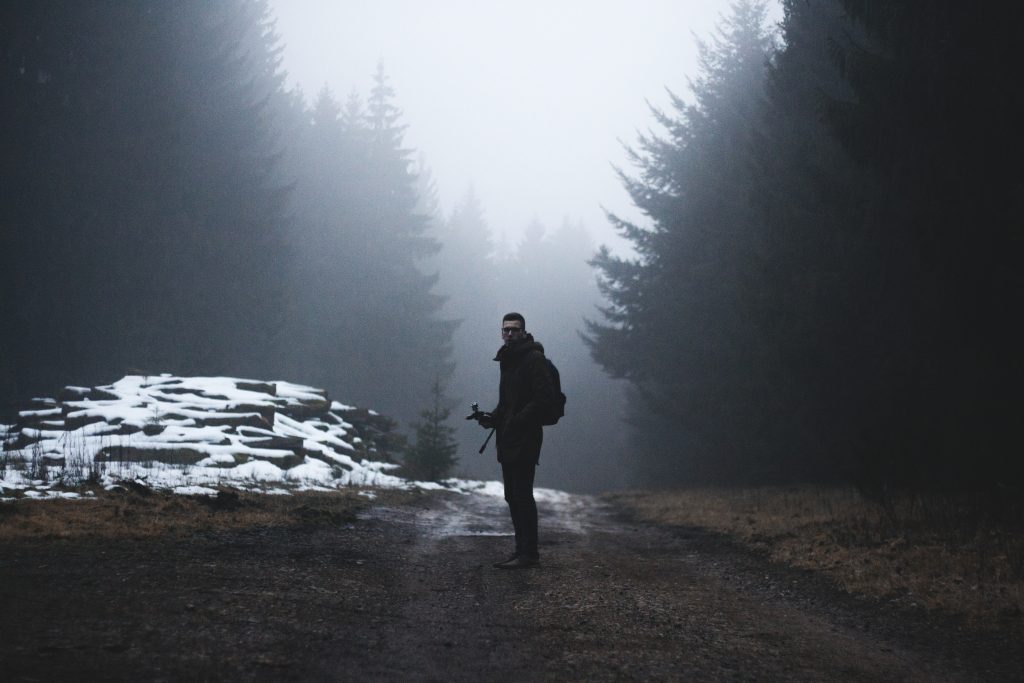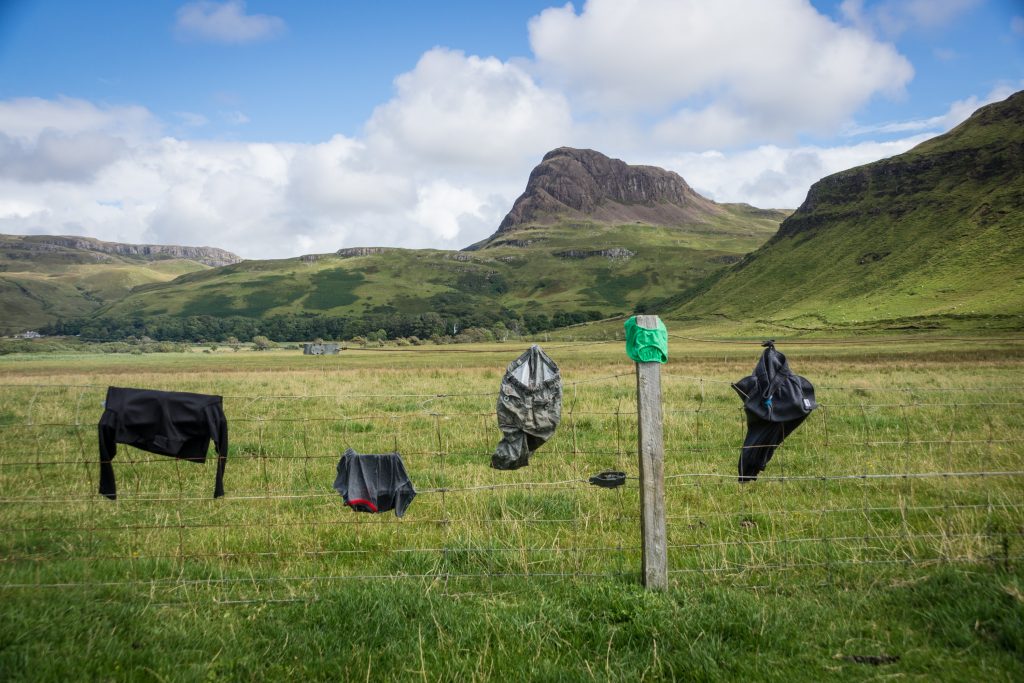You’re on your way to Alaska, you’ve read Roaming RV’s guide and you’re well prepared.
But…. there’s one problem.

Your Phone App – says bad weather!
You’ve looked at your phone and the weather app say there’s going to be some bad weather.
That wasn’t on the forecast you looked at the other day.
Yikes!
Hiking and taking in the Alaskan scenery sounded great, but what if the weather suddenly turns bad?
Don’t worry.
Here’s how to prepare to hike when the weather turns bad.
Stormy skies can be enjoyed
Being prepared for weather changes is important.
If you’re an experienced hiker, you’ll know clear blue skies can quickly change to storm clouds in a short space of time.
Warm days can turn cold and a light shower can turn into a thunderstorm in less than an hour.
Expect the unexpected
A safe hiker expects the unexpected and prepares for the worst weather.
Here’s some quick tips on how to be prepared.
Pack smart
You might have all your things in the RV when you set out for the day, but it’s smart to bring the essentials in your day pack.
That means bringing a couple layers of clothing, a hat, gloves and an emergency blanket (the fold up kind that is so small you’ll hardly notice it).
Pack water and some high energy foods like nuts, a protein bar or some died fruit.
Slipping in a first aid kit with band aids and small bandages is important too. So is a torch, a whistle and some all-weather matches.
All of these don’t take much space and won’t weigh you down. If you’re hiking in bad weather, being prepared for any outcome makes sense.
Research the weather conditions
Find out what the weather is like the day of your hike and a few days after.
If the weather app you use shows a chance of rain (a cloud with some rain drops but the clouds aren’t dark) then you’re in for some rain, so that waterproof gear in your pack is going to be important.
Ask a ranger or guide at your RV park or campsite about the weather that day.
Your phone is probably right about any good or bad weather fronts, but it’s important to ask the rangers because they know the area well and how things develop in the area.
This is super important if you’re hiking in mountainous regions.
Clouds have so many answers
If you look up at the sky and watch the clouds for a few moments, you’ll see that they tell a story.
They indicate different weather conditions and watching them shows how quickly things can change.
Oval-shaped lenticular clouds in the distance (sometimes mistaken for looking like UFOs) are a sign of wind and potential rain showers coming. Cumulonimbus clouds (dense, tower-shaped clouds) mean that a thunderstorm is on its way.
That doesn’t just mean some rain, it means lightning and a full-on thunderstorm. A sign that means head back to the RV.
Know what to do in case of severe weather
If there’s lightning, snow or severe winds then it’s important to know what to do.
Even experienced hikers should understand the basics about how to react when severe weather comes to the area.
For example, if there are signs there could be a chance of snow when you’re in Alaska then pack an extra sweater and ensure you have enough clothes and supplies with you.
If you’re walking back slower than normal, then it will take longer to get back to camp. Should the winds pick up they usually bring some cold air, so pack a fleece top if there’s chance of that happening.
Knowing what to do in the event of an emergency or being stranded while out hiking is important.
You never know when something will happen, or if a weather front comes in much faster than anticipated.
Having warm gear, knowing where to go for help and having the ability to signal for help are all vital.
If you’re unsure, turn back
Having the ambition of getting to the top of Mount Moffit or Mount Root is a courageous plan.
It will take you a good few hours to reach the top and then a similar amount of time to either return the way you came or descend a different way.
Goals are good, but if the weather turns then getting to the summit isn’t worth the risk.
An easy enough trail in the sun can turn into a slope of slush when the rains hit, making it difficult or even impossible to traverse.
Weather conditions, the terrain and how fatigued you are all add to the amount of time it will take to get back. If the weather was clear and it took you an hour to get there.
But now it’s getting windy and storm clouds are coming in then it will take longer to get back.
Sometimes, it’s better to turn back and know that you’ve accomplished something. After all, you’ll be able to have some warm coco back in the RV.
Serious campers prepare
If you’re a serious camper then you’ll understand that preparing for your trip is important, and so is getting ready for bad weather when you’re hiking in Alaska.
If you want to make a trip to remember without any of the downsides, then read through this guide and note down any things you weren’t already aware of.
Remember that if you get wet you can always dry your clothes back at the RV.

